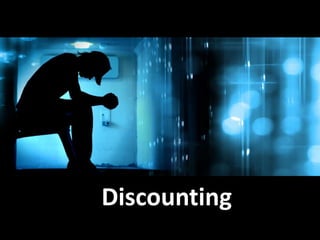The document discusses the concept of discounting, which refers to the unconscious neglect of relevant information necessary for solving problems, influenced by one's childhood scripts. It illustrates various passive behaviors resulting from discounting, such as doing nothing, over adaptation, agitation, and violence, along with examples of how these behaviors manifest in real-life situations. Additionally, it emphasizes the importance of recognizing and addressing discounting to enhance problem-solving skills and interpersonal relationships.
















































































































